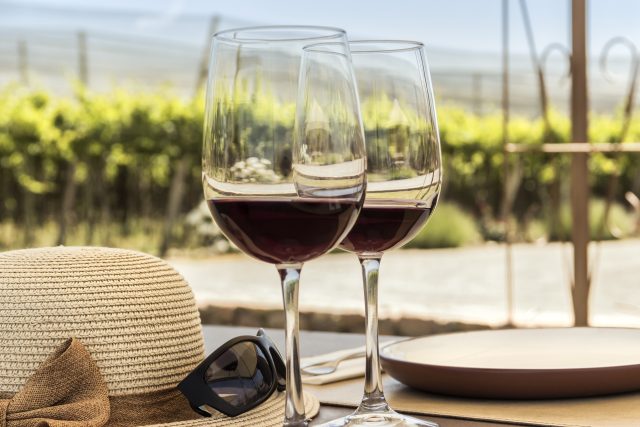This website uses cookies so that we can provide you with the best user experience possible. Cookie information is stored in your browser and performs functions such as recognising you when you return to our website and helping our team to understand which sections of the website you find most interesting and useful.
What’s next for New Zealand reds?
Sauvignon Blanc might be the juggernaut of the New Zealand wine world, but the country’s elegant reds are pulling in growing numbers of consumers. And it’s not all about Pinot Noir in 2023, as db discovers.

The latest records show that from last year there were 7,851 hectares planted to red varieties in New Zealand, compared with more than four times that amount for whites, at 33,752 ha. Nonetheless, the nation’s reds outclass themselves in purity of style and expression of terroir, and specific sub-regions are starting to emerge for the country’s most exceptional reds. As the harvest gets underway in New Zealand, we spoke with producers across the country for their take on the most exciting work being done on reds right now. Read on for our top picks.
1.Gamay and Cabernet Franc
“More and more I find myself gravitating towards red wines with higher acidity, freshness and vitality,” says Dave Sutton, winemaker for Te Kano, based in Central Otago. “We’re experimenting a lot with earlier picking, more leaf cover on the fruit during the hottest part of summer, and lower total sulphurs in the bottled wines to capture that purity without obscuring it behind interventive winemaking.
“This year we will release our first Gamay, alongside our second vintage of Cabernet Franc. Both are really exciting with fresh, pure, very crunchy tannins and a distinctive minerality, with that vibrancy of fruit which is so uniquely Central Otago. I believe these varieties will eventually sit alongside Pinot Noir as a mainstay of Central Otago red wine production.”
2. Marlborough Syrah
According to Matt Mitchell, general manager of Marisco Vineyards, which owns Marlborough powerhouses The Ned and Leefield Station, 2023 is all about Marlborough Syrah. “We have two different Syrah clones planted across separate, sheltered sites on river terraces immediately adjacent to the Waihopai River, chosen for their free draining, stony soils. The 2021 has just been racked from barrel in February and is scheduled for bottling this month (March 2023). The quality of the wines, especially when you consider the relative youth of our Syrah programme, is really very exciting indeed,” he says.
3. Hawke’s Bay Syrah
Marlborough Syrah may have healthy competition from its counterpart over in Hawke’s Bay. “Syrah is a relative newcomer and plantings are still quite modest in terms of area, but the wines are outstanding, and Hawke’s Bay Syrah has been punching well above its weight in regard to international awards and accolades,” says Church Road’s chief winemaker Chris Scott. “Syrah is probably the most exciting up-and-coming variety for New Zealand and particularly for Hawke’s Bay.
“Our best Syrahs are fantastically aromatic with good weight and flesh. They maintain an elegance and freshness without being light or insubstantial, and can age gracefully for many years. An MW who was recently singing the praises of Hawke’s Bay Syrah to me said ‘good Syrah is what Pinot wants to be when it grows up.’”
4. Cabernet Sauvignon
According to Church Road’s Scott, Cabernet Sauvignon is another variety to keep an eye on. “Harvests are getting earlier in New Zealand, and we’ve learned a lot about where and how to grow Cabernet in Hawke’s Bay. Around 30 years ago there were a lot of green wines, but now there are some outstanding Cabernet and Cabernet-dominant blends being produced and our top wines are becoming increasingly Cabernet rather than Merlot dominant.”
Patrick Materman, director of winemaking, Villa Maria, agrees that the country’s Cab Sauv has come on leaps and bounds: “Well before New Zealand Pinot Noir became globally recognised, Merlot and Cabernet Sauvignon were the key red varieties grown in New Zealand,” he says. “While Pinot Noir is most successfully grown in the cooler South Island, these varieties have found a natural home in Hawke’s Bay, and particularly in the revered Gimblett Gravels sub-region where Villa Maria has an extensive foothold. Gimblett continues to give some of the most complex, age-worthy and iconic wines, which carry a distinctive drive of fruit purity supported by ripe tannins.”
5. Sub-regional Pinot
For Pinot Noir fans, Bannockburn is the region to look out for on wine labels. A small sub-region of Central Otago, it stretches along the southern side of the Kawarau River, and its very hot, dry, wind-swept climate has earned it the nickname ‘The Heart of the Desert’. Bannockburn is also characterised by its extremely low rainfall – around 130-270mm during growing season (deserts are defined as having less than 250mm of rain per year).
“We’re lucky that through our long-standing grower relationships we have access to the “Grand Cru” area for Pinot, which is Bannockburn,” says Rob Cameron, winemaker for Invivo. “This geographically small area is blessed with unique soils and a microclimate that delivers the power and intensity of the new world with the elegance of the old world.”
Felton Road, Carrick and Terra Sancta belong to a small handful of wineries that make Pinot using grapes grown exclusively in Bannockburn.
Related news
Vignobles Cruse-Lorenzetti shuffles roles across its four Bordeaux chateaux
Is Monastrell the climate-adaptable grape the industry needs?
The story of Maison Simonnet-Febvre’s new Chablis Premier Cru Forêts

